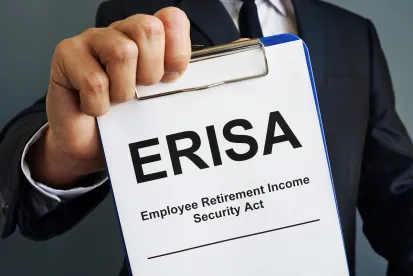Under the provisions of the Employee Retirement Income Security Act (“ERISA”) as modified by the Multiemployer Pension Plan Amendments Act of 1980 (“MPPAA”), an employer who withdraws from a multiemployer pension plan is liable for their allocable share of any underfunding. With respect to this withdrawal liability, the pension fund has potential recourse against both the withdrawing employer (generally the entity that signed the collective bargaining agreement pursuant to which fund contributions were required) as well as all other commonly owned (generally 80% or more) trades or businesses. All such “control group” members are deemed a single employer, and all are jointly and severally liable for any withdrawal liability incurred by a fellow control group member.
In addition to expanding the universal of responsible parties, the statute also endows pension funds with another powerful collection tool, Section 4212(c), MPPAA’s “evade or avoid” provision. Section 4212(c) provides that “[i]f a principal purpose of any transaction is to evade or avoid liability under this part, this part shall be applied (and liability shall be determined and collected) without regard to such transaction.” The Third Circuit recently explored the nuances of the evade or avoid provision; at issue was a $78 million dollar withdrawal liability award by an arbitrator. Steelworkers Pension Trust v. The Renco Group, Inc., 2021 U.S. App. LEXIS 25748 (3rd Cir. Aug. 26, 2021)(“Renco”).
Renco involved the acquisition of a unionized steel business (“RG Steel”) by a substantial privately held investment holding company in March 2011. In so doing, the investment holding company assumed an obligation to contribute to the Steelworkers Pension Trust (“SPT”). By the end of 2011, RG Steel was in dire straits and desperately in need of financing. After speaking with several potential lenders, the company ultimately entered into a transaction with Cerebrus Capital Management, LP (“Cerebrus”) in January 2012. Under the Cerebrus transaction, Cerebrus loaned RG Steel $125 million in exchange for a potential 49% equity component. The equity component was originally structured as warrants (a security that gives the warrant holder the option to purchase direct ownership at a set price). However, at the last minute (and at Renco’s insistence), one-half of the equity component (or 24.5%) was changed to direct ownership in the form of membership units (the equivalent of a share of stock in a corporation). Less than 5 months later (on May 31, 2012), RG Steel filed for bankruptcy under Chapter 11 of the Bankruptcy Code, permanently ceased operations and withdrew from SPT. Since this resulted in the discharge of SPT’s withdrawal liability claim against RG Steel, SPT sued Renco and other control group members.
The basis of Renco’s defense was that it owned less than the requisite 80% on the May 31, 2012 withdrawal date and therefore was not liable as a member of RG Steel’s control group. SPT countered by invoking 4212(c), arguing that a principal purpose of the Cerebrus transaction (which resulted in the transfer of a 24.5% equity interest in RG Steel) was to evade or avoid Renco incurring withdrawal liability and it should therefore be ignored.
The arbitrator, the United States District Court for the Western District of Pennsylvania, and ultimately the United States Court of Appeals for the Third Circuit all agreed with SPT. All of these forums found the last-minute change resulting in a direct transfer of 24.5% of equity at Renco’s insistence highly indicative of an evade or avoid motive. This was coupled with a statement by Renco’s counsel that the sole purpose for the direct equity transfer was a desire to have Renco cleanly exit the RG Steel control group. As this would result in Renco potentially avoiding a very large projected amount of withdrawal liability to the Fund, the arbitrator determined (and both courts agreed) that a principal purpose of the Cerebrus transaction was for Renco to evade or avoid withdrawal liability.
What are the takeaways from Renco? First and foremost, it reiterates the maxim that “timing is everything.” Although not explicitly stated, the timing of the Cerebrus transaction (which preceded RG Steel’s bankruptcy filing/withdrawal by less than 5 months) was highly indicative of the requisite “evade or avoid” motive. Most pension funds are already highly suspicious of activities (such as transfers of equity interests and assets that purport to alter control group membership) that closely precede a withdrawal. Renco can be expected to encourage and expand this scrutiny. Renco also reminds us that a transaction can (and often does) have more than one principal purpose, and that only one such purpose need have an evasive motive to trigger the application of Section 4212(c).




 />i
/>i

